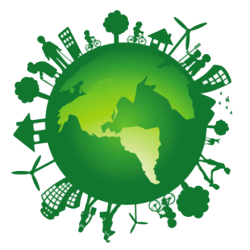A to Z Guide to Climate Change

Most of us have heard of and are relatively well versed in the ins and outs of climate change. If we don’t know the details, we’ve at least heard of Greta Thunberg and her Friday Strikes for the Climate. As she points out, climate change is an urgent global issue that is affecting our planet in many ways. The rising temperatures, melting ice caps and glaciers, extreme weather events, and decline of biodiversity are just some of the effects of climate change we’re already seeing.
We’ve put together this comprehensive guide to climate change, from its causes to its effects on ecosystems and humans, so that you can be a part of the solution. It explores the actions being taken by governments, businesses, and individuals to reduce emissions and prepare for the impacts of climate change. We hope this guide will help raise awareness on this important issue and inspire you to take action to protect our planet’s future.
A warming planet, and many other symptoms
Climate change is defined as a long-term shift in the average weather conditions globally. This includes changes in temperature, rainfall, and other atmospheric conditions. The earth’s climate has been changing over millions of years due to natural processes like volcanic eruptions, solar radiation cycles, changes in ocean currents and atmosphere composition. In the past century, however, human activities have contributed to an accelerated rate of climate change.
The cause of this centennial change is through the drastic acceleration in greenhouse gas emissions. These gases, which are often explained as car fuel, industrial remnants, and biogenic methane, thicken the ozon layer, which ultimately prevents sunrays to be reflected back out from earth. Instead, heat becomes trapped, causing a number of biographical changes stemming from a heating planet.
Earth’s average temperature has been increasing since pre-industrial times and is now at its highest level in recorded history. The global average temperature has increased by 1°C (1.8°F) in just the last century. This increase is due to the accumulation of greenhouse gases in the atmosphere, which trap more heat and make the planet warmer.
As temperatures rise, glaciers and polar ice caps melt at an accelerated rate, causing sea-levels to rise dangerously fast and causing loss of vital habitats for many species. In addition, the loss of ice is causing sea levels to rise and leading to stronger storms, more flooding in coastal areas, and changes in ocean currents. Sea-level rise is already occurring and is projected to exceed 1 meter (3.3 feet) by the end of this century if global warming continues at its current rate. Such a rise could also have major implications for New Zealanders, and many a kiwi has already looked at Auckland water levels and sea level rise map nz.
Real-world implications
There are two practical, and dangerous, implications of these biological changes. The first is the threat that it poses to ecosystems and biodiversity. Climate change affects all living organisms, especially those living in fragile habitats like coral reefs and tropical rainforests. For example, rising temperatures can cause coral reefs to bleach and die, resulting in the loss of an entire ecosystem. In addition, invasive species are often better adapted to warmer climates and can outcompete native species, leading to a decline in biodiversity. This can ultimately result in the loss of important raw materials used by humans, and a lack of farmable land.
The second implication is tied to the previous sentence, namely the consequential climate displacement. According to UNHCR, an average of 21,4 million people are displaced from weather related events every year, and the number is expected to grow. Developing nations are most likely to fall victim to climate change consequences, and as these are typically poorer populations, they face enormous difficulties building resilient communities that can withstand the increasingly frequent natural disasters.
Here’s what politicians are doing about it – the Climate Change Commission
There’s been a lot of action taken from a political standpoint, both on an international level and on a local and national level. The United Nations took a leading step when they announced the United Nations Framework Convention on Climate Change (UNFCCC) in 1992 and later on the Paris Agreement in 2015. The UNFCCC has also held multiple annual Conferences of the Parties (COPs) to review progress and set new goals for emissions reduction.
Climate change maps NZ
New Zealand has also done a fair share of action to reduce its contribution to climate change. The Climate Change Response Act of 2002 established a framework for reducing greenhouse gas emissions and adapting to a changing climate, and included scheduled reviews of the national climate change response. In 2019, the Government introduced The Emission Reductions Plan, which sets out specific targets for reduction in emissions by 2030 as well as the requirement for independent advisory from the Climate Change Commission (CCC). Today, there are readily available climate change maps nz and searise nz map that can be used in order to build resilient communities and societies, in case climate change is not curbed quickly enough.
Conclusion
Climate change is a global threat that has been caused by human activities and will require international cooperation to address. New Zealand has taken steps to reduce its emissions, but more must be done on a global scale in order to mitigate the effects of climate change. The UNFCCC provides an important framework to bring nations together and create a unified response to this pressing issue. By working together, we can ensure that the global community is better prepared for the impacts of climate change and secure a sustainable future for all.
